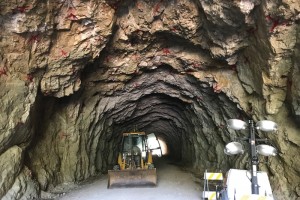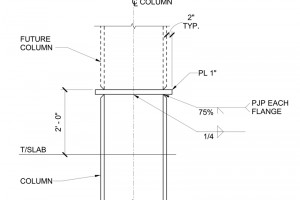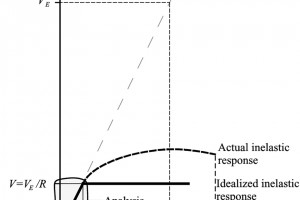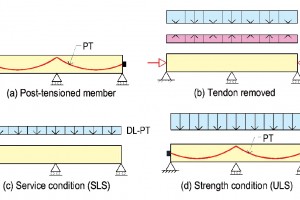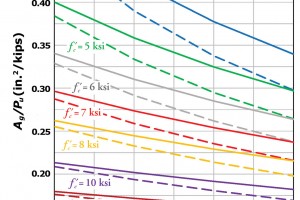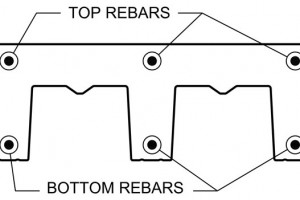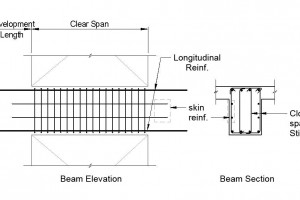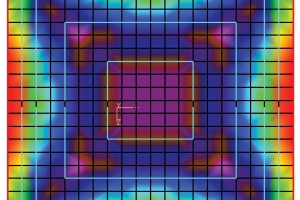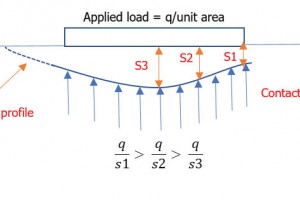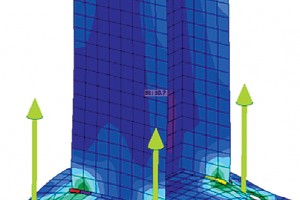Transportation tunnel design and construction requires accepting the inherent uncertainty associated with subsurface conditions that can be characterized but never truly known. This article follows the geotechnical arc of a typical tunnel project from explorations and testing, to engineering analysis, supporting the selection of tunnel excavation methods, characterizing ground behavior, developing parameters for liner design, and estimating surface settlements and effects on adjacent structures. It provides examples from completed projects to highlight the risk and mitigation methods associated with underground construction. …
Review Category : Structural Design
How many times have you designed an addition to an existing building and wondered, “What was the engineer thinking?” Many types of structures are designed for future expansion in anticipation of the ever-changing needs of the owner and community. Hospitals are frequently designed for additional floors. Structural engineers play an essential role in designing and detailing the structure to accommodate future expansion, as well as helping the owner and design team plan ahead for the intended use and functionality of the additional floors. …
Part 1: Seismic Drift
This article provides an overview of the Provisions in ASCE 7-16, Minimum Design Loads for Buildings and Other Structures, for the determination of seismic drift. The article covers several factors of drift computations, including the fundamental period, scaling modal drift obtained from modal response spectrum analysis, the seismic design base shear, torsional irregularities in structures, and the significance of P-delta effects. It also addresses the effects of elastic lateral deflections of the floor plate, and how to account for inelastic drift of a structure using a deflection amplification factor, and the allowable drifts for different types of seismic forces resisting systems and the risk categories. All section references and equation numbering are from ASCE 7-16. …
A Simple, Serviceable, and Safe Option
There are three fundamentally different methods to design a post-tensioned concrete member: load balancing, rigorous, and straight. All three methods, when followed correctly, result in serviceable and safe members. They differ substantially, however, both in the computational effort and potentially in the economy of the final design. …
Grade 60 reinforcing steel, with a yield strength of 60,000 psi, is the most commonly used grade in North America. Recent advances have enabled reinforcing steels of higher strengths to be commercially produced. …
Composite steel deck-slabs, referred to hereafter as composite slabs, have been successfully used without supplemental reinforcing in buildings with relatively short spans and typical design loads. As slab spans become longer or slab design loads become heavier, adding reinforcing bars is an effective alternative to making the composite slabs deeper and the steel decks thicker. Properly designed supplemental reinforcing allows for light, slender composite slabs that can span longer distances and results in large open interior spaces. …
Practical Reinforced Concrete Building Design
Reinforced concrete (RC) shear walls are usually the primary lateral force resisting system for reinforced concrete buildings and adjacent shear wall piers are typically connected with coupling beams above doors or corridors at floor levels. …
Part 2: Settlement Profile Convergence Method
In Part 1 (STRUCTURE, November 2018) of this 2-part series, the definition of the modulus of subgrade reaction was presented and the current state of design with regard to its use was discussed. That article further described some potential shortcomings of the simplified theory of subgrade reaction. This article continues to describe the settlement profile convergence method and how it can be implemented into a new design. …
Part 1: Fundamentals and Current Practices
Soil-Structure-Interaction (SSI) is a broad and interesting topic. Because of its complexity and unpredictability, engineers often require the use of sophisticated analysis techniques, including specialized software. …
Base plate design” is a frequently misunderstood term, particularly when discussing attachments for post-installed anchoring applications. This article explains how the concept of base plate design, which is typically understood in the context of “column base plate design,” is not necessarily relevant to fixture attachment for post-installed anchoring applications. …

